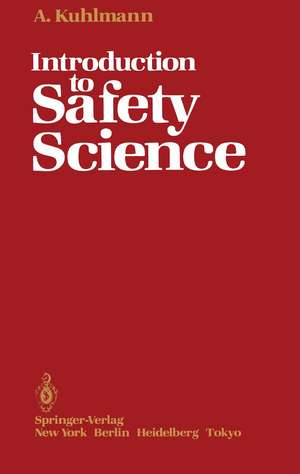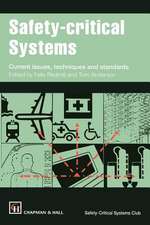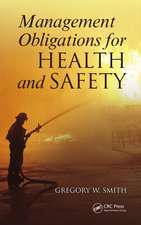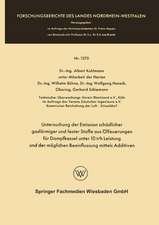Introduction to Safety Science
Autor Albert Kuhlmann Traducere de H. Herrmannen Limba Engleză Paperback – 3 mar 1986
Preț: 398.15 lei
Nou
Puncte Express: 597
Preț estimativ în valută:
76.18€ • 79.76$ • 63.04£
76.18€ • 79.76$ • 63.04£
Carte tipărită la comandă
Livrare economică 05-19 aprilie
Preluare comenzi: 021 569.72.76
Specificații
ISBN-13: 9780387961927
ISBN-10: 0387961925
Pagini: 458
Ilustrații: 458 p. 26 illus.
Dimensiuni: 155 x 235 x 24 mm
Greutate: 0.65 kg
Ediția:Softcover reprint of the original 1st ed. 1986
Editura: Springer
Colecția Springer
Locul publicării:New York, NY, United States
ISBN-10: 0387961925
Pagini: 458
Ilustrații: 458 p. 26 illus.
Dimensiuni: 155 x 235 x 24 mm
Greutate: 0.65 kg
Ediția:Softcover reprint of the original 1st ed. 1986
Editura: Springer
Colecția Springer
Locul publicării:New York, NY, United States
Public țintă
ResearchCuprins
1. Functions and Goals of Safety Science.- 2. Special Definitions.- 2.1. Damage.- 2.2. Danger, Endangerment, and Safety.- 2.3. Accident-like Occurrences Involving Damage.- 2.4. Source of Danger, Danger Field, Danger Potential, and Potential of Endangerment.- 2.5. Risk.- 3. Cybernetics and the Science of Safety.- 3.1. The Basics of Cybernetics.- 3.2. Cybernetic Approach of the Science of Safety.- 3.3. Systems Engineering as a Tool for the Evaluation of a Technical Plant as a Cybernetic Instrument.- 3.4. Mathematical Simulation.- 4. Safety Analysis.- 4.1. Tasks and Aims.- 4.2. Safety Analysis Work Methods.- 4.3. Qualitative Safety Analysis.- 4.4. Quantitative Safety Analysis.- 5. The Machine as a Safety Factor.- 5.1. The Machine Under Operational Stress.- 5.2. The Operational Behavior of the Machine.- 6. Man as a Safety Factor and as an Object of Protection.- 6.1. Medical Aspects.- 6.2. Psychological Aspects.- 6.3. Ergonomics.- 6.4. Education and Training.- 7. The Environment as a Safety Factor and an Asset Worthy of Protection.- 7.1. Natural and Civilizatory Factors.- 7.2. Environmental Strain Through Accidents in Technical Installations.- 7.3. Environmental Factors Influencing a Technical Installation.- 8. Safety Legislation.- 8.1. The Concept of Safety Legislation.- 8.2. The Goals of Safety Legislation.- 8.3. The Prevention of Damage Through Governmental Protection Measures.- 8.4. Safety Legislation and Technical Standards.- 8.5. Correlations Between the Purpose and the Effect of Safety Rules.- 8.6. The Limits of Safety Standardization.- 8.7. Extralegal Limits.- 8.8. Trends in the Development of Safety Legislation.- 9. Social Aspects of Safety Science.- 9.1. Technology Assessment.- 9.2. Risk Acceptance.- References.

















